
47 Simple Herbal Remedies
TABLE OF CONTENTS
INTRODUCTION
HISTORY OF HERBAL MEDICINE
IDENTIFYING SPECIFIC HERBS
CHOOSING THE RIGHT HERB
47 HERBAL REMEDIES
HARMFUL EFFECTS AND HERBS TO AVOID
QUICK FACTS AND TIPS
DISCLAIMER: This information is not presented by a medical practitioner and is for
educational and informational purposes only. The content is not intended to be a
substitute for professional medical advice, diagnosis, or treatment. Always seek
the advice of your physician or other qualified health provider with any questions
you may have regarding a medical condition. Never disregard professional medical
advice or delay in seeking it because of something you have read.
Since natural and/or dietary supplements are not FDA approved they must be
accompanied by a two-part disclaimer on the product label: that the statement
has not been evaluated by FDA and that the product is not intended to “diagnose,
treat, cure or prevent any disease.”
—————————————————————-
INTRODUCTION
In recent years the issue of Alternative Healing has skyrocketed to the forefront of the medical field. A 2004 government survey concluded that more than one third of adults use alternative medicine and healing.
One facet of this burgeoning interest is Herbal Medicine. While it may seem “trendy” to some, Herbal Medicine has been around for thousands of years. In fact, many of the familiar pharmaceutical medications we use today were originally created from “natural” ingredients. Drugs like opium (from poppies), aspirin (from willow bark), digitalis (from foxglove) and quinine (from the cinchona tree.)
Interestingly, the synthetic version of “aspirin” is credited with the beginning of
the pharmaceutical industry. A chemist working for the Friedrich Bayer Company in Germany created the synthetic. The company registered the term “aspirin” as a trademark but Bayer lost the patent rights when the Allies seized and resold its foreign assets after World War I.
The right to use the term “aspirin” in the United States was purchased by Sterling Drug in 1918. But even before the patent expired in 1917, Bayer had been unable to prevent their formula from being copied. Hence, the term “aspirin” has been a generic term in the U.S. ever since.
It would be impossible to cover this topic adequately in one volume. What we will endeavor to do with this post is provide you with an overview of herbal remedies and subsequently give you an in-depth look at 47 simple herbal remedies to common, everyday ailments.
Please remember that there is no substitute for advice from a medical practitioner. The contents provided here should not replace a health and fitness program and is provided for educational purposes only. You should consult your own medical practitioner before embarking on any program that affects your health and well being.
HISTORY OF HERBAL MEDICINE
Herbal Medicine is the use of botanicals (plants) either singularly or in combination to prevent and treat certain ailments and illnesses.
People native to different geographical locations have long used plants and plant extracts to cure specific maladies. Sometimes referred to as “folk” medicine, it is generally recognized that there are three schools of research one can follow with regard to the history of these treatments.
There is the study of medicines based on Greek, Roman and medieval sources which is largely used by Western schools of thought, Ayurvedic which comes from India and the Eastern tradition of Chinese Herbal Medicine. Rather than separation, these different schools of thought provide more commonality than division.
It stands to reason that most ancient peoples used plants that were native to their geographical location which provides sound reasoning as to why different schools of thought exist.
All three of these modalities at one time included both philosophical and spiritual aspects along with the scientific knowledge that existed within a specific time frame. While we are not here to render opinion, one fact does remain. The same study that determined one third of Americans used alternative therapies, the same number surveyed showed a dramatic increase in positive results to more than 60% when “prayer” was included in the mix.
Ayurvedic loosely translates to “knowledge of life.” Dating back to more than 6,000 years ago, Ayurvedic Medicine practiced not just Herbal Medicine, but some of the earliest surgical procedures as well as inoculation. Over the years Ayurvedic Medicine became increasingly more symptomatic as opposed to treating the root cause of disease which originally was steeped in strengthening the immune system.
With all our so-called advancements in the medical field, it’s interesting that physicians are still treating “effect” rather than “cause.” The old adage that, “an ounce of prevention is worth a pound of cure” could not be more true. This is especially true when it comes to natural remedies.
Most natural remedies are botanical. Singularly or in combination, the numbers of herbs available is astounding. We will barely scratch the surface in this guide and we encourage further research and study.
While this is a presentation on “herbs,” we have included other natural, organic contents. Many of the combinations include both herbs and other sources such as tree bark, alfalfa and rhubarb.
Because there are so many botanicals and combinations, we are using the most common and should not be construed as the ONLY use for a specific herb.
Additionally, please note that we use the “common names” throughout, as opposed to the more confusing, latin words.
Let’s get right to it, shall we?
>>>>Get Backyard Healing Herbs<<<<<
I am a ClickBank affiliate. I make a small commission at no additional charge to you. Please see my affiliate disclaimer.
IDENTIFYING SPECIFIC HERBS AND THEIR USES
Agar Agar
An algae from seaweed, it is a gelatinous natural thickener and is a natural laxative.
Agrimony
A valuable remedy for the digestive system it stimulates the digestive and liver secretions. It is also the herb of choice for appendicitis. Also treats incontinence, sore throats and laryngitis. As a salve it will aid in healing wounds and bruises.
Alder Tree
Use leaves for swelling. Especially helpful in easing pain of swollen breast or burning and aching feet. Should be avoided if pregnant.
Alfalfa
A highly nutritive herb, good for the pituitary gland, it alkalizes the body rapidly and detoxifies the liver. Essential in rebuilding decayed teeth and helps with arthritic and rheumatic pain.
Aloes
Such as Aloe Vera, are good for burns. While this is a well known treatments, what you may not know is that aloes are also helpful in treating cancer and stomach ailments.
Angelica
Use both the root and seed. Roots and leaves are used medicinally, the stems and seeds are used in confectionery. This herb is a useful expectorant for coughs, bronchitis and pleurisy, especially when they are accompanied by fever, colds or influenza.
Aniseed
Use the dried fruit. The strong oil in Aniseed provides the basis for its internal use to ease griping, intestinal colic and flatulence. It also has an expectorant and anti-spasmodic action and may be used in bronchitis, in tracheitis where there is persistent irritable coughing, and in whooping cough. The oil itself can be the base for an ointment to help control lice and the oil can be used directly in the control of lice.
Apple Tree
Use the bark to create a tonic that will treat gravel in the bladder and also aid in reducing fever.
Arnica
Not to be taken internally, this is an excellent treatment for bruises and sprains. Will also help relieve rheumatic pain as well as pain and inflammation of phlebitis.
Arrowroot
Use as a demulcent and nutritive food for urinary and bowel affections in infants and invalids in convalescence.
Astragalus
Widely used in Chinese Medicine, it boosts the immune system. Use for anything from the common cold to cancer.
Balm
Also known as Lemon Balm, Sweet Balm or Melissa. Using the green leaves and flowers, balm is a natural deterrent to perspiration, will also bring boils to a head, is useful for stings and toothache as well as flatulence and digestion.
Balm of Gilead
Also known as Poplar buds and Balsam Poplar. Bark and leaves are used to alleviate discomfort of cough colds, lung trouble and kidneys. Secondary, the buds can be used as a tea for gargling making it an excellent remedy for sore throats, coughs and laryngitis.
Balmony
Also known as Bitter Herb, Snake Head, Turtle Head or Turtle Broom. Good for the liver, stomach and used in the treatment of eczema. Also used in treatment of gall stones, inflammation of the gall-bladder and in jaundice. It stimulates the appetite, eases colic, dyspepsia and biliousness and is helpful in debility.
Barberry
Use to correct liver function and promote the flow of bile. Also effective for the inflammation of the gall bladder due to gall stones.
Basil
Yes this is the same basil that you use in cooking. Create a tea from the dried herb to treat nausea.
Bay
Create a tonic from the leaves for strength. Also aids in digestion and cramps.
Bayberry
Also known as Candleberry, Waxberry and Wax Myrtle. Use bark, leaves and flowers. For treatment of sore throat, piles, bleeding of the stomach, lungs, bowels and very effective as a douche.
Bee Pollen
Good for allergies. Excellent as an energy food. Aids in radiation sickness, the kind people get when they undergo radiation therapy for cancer.
Beet Root (Red)
A liver and spleen cleanser. It reactivates a sluggish liver. Should be taken in small amounts.
Bergamot
Useful for soothing the stomach and flatulence.
Betony
Useful as a blood purifier, also effective for epilepsy, jaundice and colic.
Birch
Leaves are an effective treatment for cystitis and other urinary infections. Also good for gout, arthritic pain and rheumatism.
Bitter Root
Use the root for fever, liver problems, bowels, gallstones diabetes and ailments involving mucous membranes.
Bitter Sweet
Use root and twig for purifying blood, treating ailments of the liver, pancreas, spleen, glandular organs, piles, jaundice, burns skin and fever.
Blackberry
Use the bark of the root and rhizome. A safe, gentle remedy that can be used for diarrhea, dysentery and externally for skin eruptions and burns.
Black Catechu
Effective treatment for diarrhea, dysentery and as a local application for sore mouths and gums.
Black Cohosh
Also known as Black Snakeroot, Bugbane, Rattleroot, Rattleweed, Squawroot. The dried root is the part used. This is a powerful relaxant as well as being extremely effective with easing painful menstrual cramps. Ovarian cramps will be relieved as well as bringing on a delayed menstrual cycle. It is also effective in the treatment of arthritis, osteo-arthritis, rheumatic pain and neurological pan. In small doses, appetite and digestion are greatly improved and is very beneficial for the nervous system in general.
Black Haw
Used the dried root. A powerful relaxant for the uterus, is used to assist in threatened miscarriage as well as false labor pains. Also good for reducing blood pressure
Black Root
Relieves liver congestion, jaundice and for an inflamed gall-bladder..
Black Walnut Hulls
Expels parasites and tape worms. Rich in manganese which is important for nerves, brain and cartilage. Also used for many kind so skin diseases.
Blessed Thistle
Excellent for hormone balance. Helps in all types of female disorders. Good for migraine headaches by improving on taking oxygen to the brain.
Blood Root
Also known as Red Root, Red Indian Paint and Tetterwort. The part of the plant that is used is the dried rhizome (root). It is effective for the treatment of bronchitis easing the bronchial muscles. Also proven effective for the treatment of asthma, croup and laryngitis.
Blue Cohosh
Also known as Papoose Root or Squawroot. Use the root and rhizome. Interesting that the secondary names pertain to women and children. This is an excellent tonic for the uterus and may be used wherever there may be a weakness. Because it has a anti-spasmodic action, it will ease false labor pains. When labor does ensue, using Blue Cohosh shortly before birth will help in an easy delivery.
Blue Flag
The part of this plant to use is the root. It is active for cancer, rheumatism, blood impurities, skin, liver and a good laxative.
Bogbean
Useful for treatment of rheumatism, osteo-arthritis and rheumatoid arthritis. Also has a stimulating effect on the walls of the colon and digestive juices.
Boneset
Boneset is one of the best remedies for the relief of symptoms that come with the flue. It will quickly relieve the aches and pains as well as help to reduce fever.
Borage
Effective treatment for kidneys, ringworm, mouth sores and the blood. It is highly recommended after any treatment with cortisone or steroids as it will revive and renew the adrenal glands over time.
Buchu
Use the leaves to treat urinary ailments as well as kidney, bladder, perspiration and prostate illness.
Bugleweed
Bugleweed is specific for over-active thyroid glands where there is tightness of breath, palpitations and shaking. Good for the central nervous system.
Buckthorn Bark
Acts as a mild, yet reliable and effective laxative. It also works again gout and dropsy.
Burdock
Also known as Lappa and Beggars Buttons. The part of the plant that is used is the rhizome. This is a bitter herb, but very effective for the treatment of skin diseases such as dry and scaly skin and when used over a long period of time can be helpful in the treatment of psoriasis.
Butternut
Also known as Butternut, White Walnut, Lemon Walnut, Oilnut. It influences, with great energy, the liver, small intestines, colon and rectum, causing and increased manufacture and elimination of bile, as well as increased activity of the glands of the intestinal tract.
Calamus
Use the root to treat fever, stomach ailments, sores, burns, ulcers. Also known to destroy a taste for tobacco!
Calendula
You probably know this as Marigold. Use the whole flower tops or just the petals. One of the best herbs for treating local skin problems and may be used wherever there is an inflammation on the skin.
California Poppy
Use dried aerial parts. A non-addictive alternative to the Opium Poppy. Used as a sedative for children where there is over-excitability and sleeplessness.
Caraway
The part of this to use is the seeds. A calming herb that will help to ease flatulence. This use is particularly helpful in children. It also stimulates the appetite and because it is also an astringent it will help laryngitis, bronchitis and bronchial asthma.
Cascara Sagrada
Also known as Sacred Bark, Chittem Bark, and Cascara. The part to use is the bark after aging. Best use is for chronic constipation.
Catnip
Also known as Catmint and Catnep. This is a traditional cold and flu treatment. Can also use it to drive your cat crazy!
Cayenne
Also known as Capsicum, Chili or Chili Pepper, Hot Pepper and Tabasco Pepper. This is an effective treatment for pleurisy, kidney problems, skin and colds.
Celery Seeds
Use dried ripe fruits to use as an anti-inflammatory, anti-rheumatic, diuretic or anti-spasmodic. Great for treating rheumatism, arthritis and gout.
Chamomile
The total list of benefit and treatments for Camomile is huge. Just a few come to mind, insomnia, anxiety, menopausal depression, loss of appetite, dyspepsia, diarrhoea, colic, aches and pains of ‘flu, migraine, neuralgia, teething, vertigo, motion sickness, conjunctivitis, inflamed skin. This may seem too good to be true, but it reflects the wide range of actions in the body.
Chapparal
Very useful in cases of acne, arthritis, chronic backache, skin conditions of warts and blotches. Also one of the best cancer herbs.
Cherry
Use the bark to treat phlegm in the throat, tuberculosis, coughs, bronchitis, heart and blood pressure.
Chestnut
Use inner bark and leaves to treat colds and liver ailments.
Cinnamon
Makes a great antiseptic and use to treat colds.
Coltsfoot
Also known as Coughwort, Horsehoof and Foals Foot. Use the dried flowers and leaves. There are useful levels of zinc in the leaves of this herb, which has been known to have anti-inflammatory results. Use for coughs, bronchitis, whooping cough and asthma.
Comfrey
Also known as Knitbone. Comfrey has high levels of allantoin which is a healing chemical that stimulates cell growth. This makes it wonderful for internal and external use. Works well for gastric ailments including duodenal ulcers and colitis. Is also beneficial for bronchitis.
Coriander
Excellent for stomach trouble, prostrate and any urinary ailments.
Corn Silk
Use the stigmas from the female flowers to use as a diuretic, anti-inflammatory or tonic. Corn Silk will help in any irritation of the urinary system.
Damiana
Excellent strengthening energy to nerves and limbs, Damiana has a reputation as a great sexual rejuvenator, particularly in lethargy of the sexual organs. Whether that old wives tale is true or not, it does have a definite positive effect on the central nervous system and the hormonal system as well as a being useful as an anti-depressant.
Dandelion
User either the root or leaf. Useful as a powerful diuretic, it is a good source for potassium. Help in fighting anemia, also used for fever, liver, skin and urinary ailments.
Devils Claw
Very effective in arthritis as well as liver and kidney problems.
Dill
It is the seeds that are used for treatments. An excellent remedy for flatulence and colic, it also helps to sooth the nerves.
Echinacea
Also known as Purple Coneflower, this is probably one of the most widely recognized herbal treatments available today. While most people know it’s usefulness for fighting colds flue and infections, it is an excellent blood cleanser. It also clears up carbuncles, boils and blood poisoning.
Elecampane
Treatment for coughs, asthma, bronchitis, tuberculosis, mucous, kidney and bladder stones.
Eucalyptus
Also known as Blue Gum. The leaves and bark are used. Excellent treatment for fever, bronchitis and asthma.
Eyebright
This is the main herb for protecting and maintaining the health of the eye. Acts as an internal medicine for the constitutional tendency to eye weakness. Will also remove cysts that have been caused by chronic conjunctivitis.
Fennel
Use the seeds. Excellent for obesity because it helps take away the appetite. Aids indigestion when uric acid is the problem. Is also good for gas acid stomach, gout and colic in infants.
Fenugreek
Use the seed. Excellent treatment for swellings, fever, blood poison prevention and as a tea for sore throat.
Feverfew
Use the leaves to treat migraine headaches, arthritis, dizziness and tinnitus.
Flaxseed
For treatment of sore throat and mucous membranes.
Fo-Ti
Excellent for mental depression. Has been used to help memory.
Garlic
Garlic is one of the few herbs that have universal recognition and uses. It stimulates the activity of the digestive organs. It is used to emulsify the cholesterol and loosen it from the arterial walls. Proven useful in asthma and whooping cough, it is also valuable in intestinal infections and effective in reducing high blood pressure.
Gentian Root
An excellent tonic and blood purifier. Treats the liver, worms, fever and colds. It is also very effective for snake bites due to it’s equality with quinine.
Ginger
Useful in all painful spasms of the bowels and stomach. Taken hot, it is excellent for suppressed menstruation. A catalyst from the pelvic area down.
Ginseng
The root is used. Excellent for low blood pressure. Increases the capillary circulation of the brain and also helps with nervous exhaustion. Useful for chest troubles, colds stomach and lungs.
Golden Seal
Use the root. A powerful agent used in treating ulcers, diphtheria, tonsillitis and spinal meningitis. It is one of the best substitutes for quinine. It acts as an insulin.
Gotu Kola
Contains remarkable rejuvenating properties. Is known as “The Secret of Perpetual Youth.” It strengthens the heart, memory and brain.
Hawthorne
Known as the heart herb. It is used to dilate the coronary blood vessels in a mild way and restore the heart muscle wall.
Henna
Use the leaves and root. Effective treatment for the liver and skin infections.
Hops
Has a remarkable relaxing effect on the central nervous system. It is also effective for anemia and restoring the appetite.
Horehound
A stimulant, use to treat colds coughs and sore throat.
Horsetail
Contains a great deal of silica, which helps keep the elasticity in the skin. Also an effective diuretic and helps with kidney stones.
Hydrangea
Use dried roots, rhizomes. The greatest use for Hydrangea is for treating enlarged prostate glands. It is also effective for urinary infections like cystitis, including stones.
Hyssop
A body cleanser it is also effective for nervousness and recovering from colds.
Juniper Berries
Excellent for kidney and bladder problems relating to pancreas and adrenal glands. Works well for dropsy and leucorrhea.
Kelp
As we mentioned earlier, we will include descriptions that are not necessarily herbs. This is one of them. Kelp is excellent for the thyroid gland and goiters. Has a remedial and normalizing action on the sensory nerves. Good for nails and hair and cleanses radiation from the body.
Knapweed
Effective treatment for internal bleeding and swollen glands.
Lavendar
Use the flowers. This is a beautiful herb and is widely used. Many do not realize that it is an effective treatment for headaches related to stress. Also good for depression.
Liquorice
Natural cortisone. Used for hypoglycemia, adrenal glands and stress. Also for coughs and chest complaints, gastric ulcers and throat conditions.
Lobelia
The most powerful relaxant. Reduces palpitations of the heart. Strengthens muscle action. Fine treatment for fevers, pneumonia, meningitis, pleurisy, hepatitis and peritonitis.
Marshmallow
Excellent to bathe sore and inflamed eyes. Also good for lung trouble, hoarseness, catarrh, diarrhea and dysentery and all kidney diseases. Also good for a vaginal douche.
Milkweed
Can be used to increase the secretion of bile from the liver and gall-bladder. Use as a liver tonic and useful for gallstones, stomach and urine.
Marigold
Use the flowers. Good for the skin, and the heart.
Marjoram
Effective for the treatment of nervous disorders. Also good for the digestion.
Mugwort
Effective treatment for the stomach and for gout.
Mullein
Very effective use for respiratory conditions like hard coughing, bronchitis and hay fever.
Myrrh Gum
Valuable for bronchial and lung diseases. Excellent for pyorrhea. Removes halitosis or bad breath when taken internally. Excellent remedy for ulcers, piles and hemorrhoids.
Nettle
The Nettle is another one of those “universal” plants. They are found all over the world and they strengthen the entire body. Rheumatism, arthritis, eczema, nosebleeds, arteries, lessen blood pressure are just a few applications. Nettles contain calcium, chlorine, iron, potassium, silicon, sodium and sulphur.
Oregon Grape
Use the root and rhizome. Similar to both Golden Seal and Barberry. Main use is in the treatment of chronic, scaly skin conditions such as psoriasis and eczema. Also effective for the liver, gall bladder and as a laxative for chronic constipation.
Pansy
Pansies contain Vitamins A, B and C, niacin, chlorine, iron, magnesium, potassium, silicon, and trace minerals. Effective for treatment of the bladder and kidneys.
Papaya
Aids digestion. Effective in relieving allergies by its ability to denaturize proteins.
Parsley
Known to be rich in Vitamin B and potassium, and tumerous cells cannot multiply in potassium. An excellent diuretic and one of the most excellent herbs for gallbladder as it expels gallstones.
Passion Flower
Used as a sedative. Gives a calming effect helping headaches, neuralgia, hysteria and high blood pressure caused by mental attitude.
Pennyroyal
This is a valuable remedy for women during menopause. It should not be used by pregnant women because it will bring on suppressed menstruation. Also good for fevers, colds and phlegm in chest and lungs.
Peppermint
Combats flatulence, it is used to relieve colic, nausea and the desire to vomit. Also good for travel sickness.
Plaintain
Will stop bleeding from wounds, treats eczema and burns. Also good for coughs and mild bronchitis.
Pleurisy Root
Effective against respiratory infections where it assists expectoration. Use to treat pleurisy, pneumonia and influenza (flu).
Psyllium
Excellent colon cleanser, cleans out compacted pockets on the colon. Creates bulk and relieves auto-intoxication.
Raspberry
As a tea, it is excellent for morning sickness in pregnancy. An aid to preventing miscarriage, it strengthens the uterine walls prior to giving birth.
Red Clover
A good blood purifier. It is an antidote to cancer, containing lime, silica and other earthy salts. Relaxing to nerves and entire system.
Rhubarb Root
Very good to increase the muscular action of the bowels. Also will relieve headaches.
Rose Hips
Contains a great deal of vitamin C, ranging from 10 to 100 times greater than any other known food. Therefore, it is used as an infection fighter. Also helps with physical stresses and pollution. Also contains Vitamins, A, B1, B2, E, K, P, niacin, calcium, iron, phosphorous.
Rosemary
Rosemary is a circulatory and nerve stimulant. Has a calming effect on the digestion as well as headache or depression.
Rue
Effective treatment for nervousness, hysteria, worms, convulsions, joints and gout.
St. Johns Wort
Taken internally, has a sedative and pain reducing effect. Use in treatment of neuralgia, anxiety, tension and similar problems. Good for menopausal irritations.
Saffron
A natural hydrochloric acid (utilizes sugar of fruits and oils), thus helping arthritics get rid of the uric acid which holds the calcium deposited in the joints. Also reduces lactic acid build up. Good for measles, skin, scarlet fever and perspiration.
Sage
Sage tea makes an excellent gargle for ulcerated throat or mouth. Stops bleeding of wounds and clean old ulcers and sores. Will expel worms. Good for spermatorrhea (involuntary sexual emissions.) Also for liver and kidney troubles.
Sarsaparilla Root
Eliminates poisons from the blood and purifies the system from infections. Is dependably useful in rheumatism, gout, skin eruptions, ringworm, scrofula, internal inflammation, colds and catarrh.
Sassafras Bark
Often called a spring medicine to purify the blood and cleanse the entire system. Valuable in colic and all skin diseases and eruptions.
Saw Palmetto
Useful for the treatment of asthma, bronchitis, colds and is also a sedative. Also great for reproductive organs.
Senna
Most effective as a strong laxative.
Skullcap
Is more effective than quinine and is not as harmful as quinine is. Good in neuralgia, aches and pains. It is also one of the best nerve tonics. Reduces high blood pressure, heart conditions and disorders of the central nervous systems such as St. Vitus dance, shaking palsy, hydrophobia and epilepsy.
Slippery Elm Bark
Use the inner portion of the bark. Vary valuable for mucus inflammation of the lungs, bowels, stomach, kidneys and bladder. Will sustain ulcerated and cancerous stomach when nothing else will.
Squaw Vine
Excellent to take during pregnancy. Used for uterine problems, urinary troubles and other female complaints.
Tansy
Can be useful for treatment of nervous disorders, worms and jaundice. MUST BE AVOIDED DURING PREGNANCY.
Thyme
Has a high content of oil. Good for internal use for coughs, throat and asthma as well as external use for infected wounds.
Uva Ursi
Very useful in diabetes and all kinds of kidney troubles. Excellent remedy for piles, hemorrhoids, spleen, liver, pancreas and gonorrhea. Also good where there are mucus discharges from the bladder with pus and blood.
Valerian
A nerve tonic. Used for epileptic fits and St. Vitus dance, nervous derangement or irritations. Excellent for children with measles and scarlet fever. Promotes sleep.
Vervain
Also known as Wild Hyssop. Will strengthen the nervous system while easing depression and melancholia. Good for fever and best for colds.
Wahoo
A primary liver herb, it acts to remove congestion from the liver allowing free flow of bile thereby helping the digestive process. Also used in the treatment of jaundice and bladder problems. Will also relive constipation.
White Oak Bark
Good for varicose veins. Used in douches and enemas for internal tumors and swellings. One of the best remedies for piles and hemorrhoids, hemorrhages or any trouble of the rectum. It normalized the liver, kidneys and spleen.
Wild Carrot
Also known as Queen Annes Lace, Wild Carrot is a diuretic, that acts as a urinary antiseptic which is why it is a treatment for cystitis, kidney stones, prostatitis. Also effective for gout and rheumatism.
Witch Hazel
Use bark and leaves. A good tonic, it aids in treating menstruation, lungs, uterus, piles, circulation, tumors eyes and is effective as a douche.
Wood Betony
Excellent healing herb for bronchitis, coughs and colds. Also good for kidney and bladder. This herb helps to correct a bed-wetting problem.
Wormwood
A good tonic for treating liver, fever, and digestion.
Yarrow
A tonic for run-down conditions and indigestion. If taken freely at the beginning of a cold, it will break it up in 24 hours. Has soothing and healing action on mucus membranes.
Yellow Dock
Mineral rich plant, especially rich in iron. Excellent as a blood purifier and tones up the entire system.
Yucca
Hope for arthritics. The extract from the plant has been used with surprising success on arthritis and rheumatism sufferers.
>>>>Get Backyard Healing Herbs<<<<<
I am a ClickBank affiliate. I make a small commission at no additional charge to you. Please see my affiliate disclaimer.
CHOOSING THE RIGHT HERB
Nothing in the makeup of a plant tells us in what way it would be used the best. There are over a half million known herbs that could be used as possible remedies. In China, The Chinese Herbalist practitioners have over 2,000 that are readily available in their pharmacies.
Herbal remedies around the globe very in strength from very mild, gentle remedies that we even use as food to potential poisons if taken at the wrong dose.
Folk use of herbal remedies is familiar to all of us in some form or another. Rightly so, because this is how these remedies are learned. They are passed down from generation to generation. Unfortunately, that is what fuels the fire of the scientific community and their disdain. It really is their loss, because generations of experience and knowledge should not be so readily dismissed. In fact, many of our current pharmacological concoctions have their roots in herbal medicine.
Remedies and recipes for herbal teas are handed down from generation to generation and are still remembered and used to this day. Thankfully, the current changes in the world toward the traditional remedies is changing and changing for the better.
As we stated earlier there are countless numbers of herbal combinations that are useful for specific ailments. Additionally, certain herbs are recommended to target individual body parts and we will list them here:
Arteries – Kelp, Hawthorne Berries, Wheat Germ Oil, Garlic. Bioflavonoid herbs such as Ginkgo, Buckwheat and Lime Blossom are especially useful in strenghtening blood vessels.
Bladder – Juniper Berries, Bochu, Wild Carrot Seed, Gravel Root
Blood Pressure – European Mistletoe, Apple Bark
Bones – Comfrey, Horsetail Grass
Brain – Lily of the Valley, Ginseng, Gotu Kola
Circulation System – Cayenne (most powerful), Ginger, Bayberry Bark, Prickly Ash
Digestive System – Hops, Papaya, Mustard Seed, Centaury, Gentian, Agrimony, Oregon Grape Root, Wormwood
Ears – Eyebright, Golden Seal
Endocrine Glands – Ginseng, Sarsparilla, Yarrow, Licorice, False Unicorn Root, True Unicorn Root, Pumpkin Seeds, Kelp
Fertility – Sarsparilla, False Unicorn Root, Damiana, Licorice
Gall Bladder – Olive Oil, Bayberry Bark, Comfrey
Hair – Rosemary, Sage, Henna
Heart – Wheat Germ, Hawthorne Berry, Tansy
Kidneys – Dandelion Root, Uva Ursi, White Poplar Bark, Sandalwood, Parsley
Large Intestine – Cascara Sagrada Bar, Squaw Vine for transverse colon
Liver – Oregon Grape Root, Dandelion, Mandrake, Maple Bark
Lungs – Comfrey, Mullein, Lobelia, Oat Straw, Pleurisy Root, Lungwort, Garlic
Mouth – Tincture of Cayenne, Bayberry Bark, Oak Bark
Nervous System – Skullcap, Valerian, Hops, Lobelia, Ladies Slipper Root, Passion Flowers, Linden Flowers
Nose – Bayberry Bark, Golden Seal (Snuff: 1 part Bayberry Bark 2 parts Golden Seal)
Pancreas – Cedar Berries, Yarrow, Periwinkle, Dandelion
Prostate – Pumpkin Seeds, Echinacea, Saw Palmetto Berries, Uva Ursi, Gravel Root
Respiratory – Cayenne, Lobelia, Hyssop, Oat Straw, Garlic, Mullein, Elecampane and Coltsfoot.
Skin – Chickweed, Walnut Shell tincture
Small Intestine – Rhubarb Root, Slippery Elm
Spleen – Maple Leaves and Bark, Hyssop Tea with Steamed Figs, Bayberry Bark, Angelica
Stomach – Raspberry Leaf, Dandelion Root, Angelica, Centaury, Agrimony, Calamus, Wormwood, Oregon Grape Root
Throat – Mullein, Sage, Golden Seal, Slippery Elm, Eucalyptus, Bay, Poppy Seeds, Yerba Santa, Blood Root, Hyssop, Elecampane
Urinary – Dandelion root, Parsley Root, Wild Carrot Seed, Juniper Berries, Uva Ursi and Corn Silk are useful.
Uterus and Vagina – Squaw Vine, Dong Kwai, Golden Seal Root, Oak Bark, White Pond Lily, Trillium, Beth Root, Uva Ursi, Angelica, Myrrh, Yarrow, Comfrey, Alfalfa, Saw Palmetto Berries
>>>>Get Backyard Healing Herbs<<<<<
I am a ClickBank affiliate. I make a small commission at no additional charge to you. Please see my affiliate disclaimer.
47 HERBAL REMEDIES
Acne
Equal parts: Butternut, Burdock, Echinacea and Cleavers to 5ml of tincture applied three times a day.
Altitude Sickness
In a pot of boiling water, steep Cloves, Allspice, Bay Leaf, Celery Seed, Cinnamon and Marjoram in quantities to taste. Mix in the following mints: Basil, Savory and Thyme. Should be taken in advance of anticipated travel or hike.
Alzheimer’s Disease
This disease affects four million Americans. It strikes about 10 percent of people over 65 and about half of those who live beyond 85. Acetylcholine is a brain chemical known as a neurotransmitter. Acetylcholine is a key ingredient to cognition and reasoning. People with Alzheimer’s often have a deficiency of Acetylcholine. The problem with experimental and FDA approved drugs is their toxicity which carry a potential for liver disease. Since the premise is to slow the degeneration of Acetylcholine and preserve what is already in the brain, there are herbs that can help. It just makes sense to look at herbal alternatives, specifically those herbs that contain compounds that prevent the breakdown of Acetylcholine. Horsebalm, Rosemary, Brazil Nut, Dandelion, Fava Beans, Fenugreek, Ginkgo, Sage, Stinging Nettle, Willow and Gotu Kola are all beneficial for the treatment of Alzheimer’s. Those herbs that can be added as dietary supplements are encouraged. Horsebalm helps to prevent the breakdown of Acetylcholine. Add a few droppers of Horsebalm to a favorite herbal shampoo. Research has also shown that adding foods high in lecithin is promising. Plant foods such as Dandelion Flowers, Poppy Seeds, Soybeans and mung beans should also be added to the diet.
Arthritis
The term Arthritis literally translates to “joint inflammation.” If you suffer from Arthritis, chances are you have taken drugs to combat the effects or tried other “home remedies.” If you haven’t yet tried “Urtication,” it might be helpful. The term “Urtication” comes from the botanical name, Urtica dioica and dates back some 2,000 years to biblical times. Urtica dioica is “Stinging Nettle. The treatment is to grasp the nettles in a gloved hand and swat the sore joints with the nettles. This may seem bizarre, but the practice has proven to be so effective for some sufferers of arthritis that they now maintain a nettle plant on their window sill.
Asthma
Ephedra sinica (Ma Huang) is an excellent bronchodilator. The natural form of Ephedra is better tolerated than the synthetic “edphedrine” causing fewer negative heart symptoms.
Gumweed 24 parts tincture
Pill Bearing Spurge 24 parts tincture
Lobelia 12 parts tincture
Wild Cherry 12 parts tincture
Licorice Root 12 parts tincture
Motherwort 12 parts tincture
Ma Huang 10 parts tincture
Aniseed 1 parts e.o.
5ml. of mixture taken 3 times a day. If Pill Bearing Spurge proves difficult to obtain then double the amount of Gumweed to make up for it.
Athlete’s Foot
Fungicidal essential oils are the most effective topical treatment. Examples are Myrrh, Ti-Tree and Garlic. The treatment will be smelly but will also show dramatic results.
Bad Breath
Chewing on parsley will eliminate bad breath. Chewing on Cardamom is very effective as Cardamom actually kills bad breath bacteria.
Bronchitis
Try two teaspoons of horehound per one cup of boiling water. Add lemon and licorice to taste.
Bruises
Crush and chop chilled parsley and apply to bruised area. Parsley will pull the color from the bruising very quickly. Possible to have the discoloration gone within 24 hours.
Burns
There are three levels of burns. First degree only hurts the outer layer of skin, like a sunburn. Second degree burns will develop blisters indicating the burn has penetrated deeper into the skin and is more painful. The worst type of burn is a third-degree burn and is a medical emergency. For minor first and second degree burns, use a leaf from an aloe plant for instant relief.
Cancer
Let’s make it perfectly clear that as of this writing there is no known cure for Cancer. In fact, the term itself is ambiguous and can be any type of malignant illness. What we will give you here is a Cancer and Blood Purifier:
4 parts Licorice Root
4 parts Red Clover
2 parts Burdock Root
2 parts Stillingia
2 parts Berberis Root
2 parts Poke Root
1 part Cascara Amarga
1 part Prickley Bark
1 part Buckthorne Bark
Fill gelatin capsules. Take 1 on the first day, 2 on the second until you reach 36 per day for 2 years. Avoid vinegar, pork and tomatoes.
Canker Sores
Mouth wash: Equal parts Marshmallow and Chamomile infused to be gargled often. Also consider Balm and St. John’s Wort.
Colds and Flu
At the first sign of sniffles, immediately ingest Echinacea. There are over 200 viruses that can cause the common cold. They are shared by coughing, sneezing and by hand. Therefore, the first treatment is prevention! Wash hands often and well, using a good anti-bacterial soap. Eating garlic can help in the prevention of colds and flu. Here are a few other remedies:
Pour a cup of boiling water over a couple of tablespoons of fresh, shredded Ginger Root. Makes a good hot tea that is effective against the most common cold viruses.
Constipation
One to three tablespoons of whole or crushed Flaxseed two or three times a day will help with chronic constipation. Be sure you get at least eight glasses of water a day to keep the bulk moving through the digestive system.
Coughing
Slice a large onion into rings. Place in deep bowl. Cover the slices with organic honey. Allow to stand overnight. In the morning strain the liquid creating a simple cough elixir.
Dandruff
Create an herbal scalp rinse.
Add one teaspoon of Potassium Chloride (find in salt section at the supermarket) into 6 cups of water. Heat until the Potassium Chloride dissolves. Chop four ounces of fresh Celandine (if fresh is not available use a half cup of the dried herb instead).Add Celandine to the solution. Allow to stand for two hours. Then boil slowly for 20 minutes. Strain out the plant material, and simmer reducing to one and one half cups. Add eight ounces of glycerin and continue simmering reducing the liquid slowly to two cups. Strain the result and bottle it. Store in cool place. Use once or twice a day as a hair rinse.
Depression
Persistent depression is a serious disorder and you should see your doctor for treatment. In the meantime you might like to try a Licorice tea. Simply add some to any of your favorite herbal teas. Using up to approximately 3 cups of tea a day or more or ingesting larger amounts can produce headache, lethargy, sodium and water retention, loss of potassium and high blood pressure. At least eight Licorice compounds are monoamine oxidase (MAO) inhibitors which are compounds capable of potent antidepressant action.
Diarrhea
Use two to three teaspoons of Agrimony (high tannin content) leaves to make a tea.
Apple pulp is rich in pectin. Try eating applesauce.
Use cooked carrots to treat diarrhea in infants. Will soothe the digestive tract while providing nutrients that are lost during the attack.
In all cases, drink plenty of water to prevent dehydration.
Earache
Taken internally, Garlic can help cure a middle ear infection. A few drops of Garlic oil in the ear can’t hurt either. You can also try using a teaspoon of dried Echinacea in tea.
Fever
Two to three teaspoons of Elder flowers a day in tea will help reduce feverish chills.
Try Ginger tea or eat candied ginger or sip ginger ale. Add peppermint to fever-fighting teas.
Flatulence
Ever wonder why the instructions on packages of beans recommend soaking the beans overnight? It actually has nothing to do with the recipe, but everything to do with an anti-gas remedy. You can also deflate flatulence with a tea made up of Camomile, Caraway, Dill, Fennel, Lemon Balm and Peppermint. Sweeten with Licorice.
>>>>Get Backyard Healing Herbs<<<<<
I am a ClickBank affiliate. I make a small commission at no additional charge to you. Please see my affiliate disclaimer.
Gallstones and Kidney Stones
The best way to treat these diseases is with prevention and that begins with drinking six to eight glasses of water each day. This keeps the urine too diluted to create the stones in the first place. Drink several cups of Stinging Nettle Tea each day to prevent and treat kidney stones. To one cup of boiling water, steep one teaspoon of finely chopped dried herb.
Gout
It is purported that Celery Seed keeps uric acid below critical levels. Try taking two to four tablets of celery seed extract daily.
Headache
No single treatment works for all headaches. Feverfew is probably the best known treatment. Some people try ingesting the leaves directly, causing mouth sores. The good news is that you can also brew a tea with two to eight fresh leaves steeping in boiling water. Do not boil the leaves however, as it breaks down the effectiveness. Pregnant women SHOULD NOT take Feverfew nor should women who are breast feeding.
Heartburn
Camomile is the best source for heartburn and stomach problems. Licorice might be a second choice, but take care. Too much Licorice will produce headache, lethargy, and a potential serious loss of potassium as well as the possibility of high blood pressure.
Hemorrhoids
Use the following salve after each bowel movement.
One teaspoon Calendula
One teaspoon Camomile
One teaspoon Yarrow
One teaspoon Plantain
One teaspoon St. John’s Wort
Mix each herb in powdered form with enough emollient oil (almond) to form a paste then apply.
High Blood Pressure
Try vegetable soup. Yes, vegetable soup. Add any of the following: Celery, Garlic, Hawthorn, Kudzu, Onion, Tomato, Broccoli, Carrot, Purslane (any anything else that contains magnesium), Saffron, Valerian, Fennel, Oregano, Black Pepper, Basil and Tarragon. Consume on a regular basis. Eliminate pork, beef, and alcohol from your diet. Eat more plant foods and herbs and use a good vitamin regimen.
Indigestion
Create a tincture of:
A dash of Angelica, Anise, Camomile, Coriander, Fennel, Ginger, Rosemary and Turmeric along with two dashes of any mint herbs. Steep these herbs overnight in the refrigerator in a mixture of alcohol and water (one shot of vodka per cup of spring water). Drink as a tea or mix with juice.
Insect Bites/Stings
Try using Citronnela Oil. Do not use without first diluting. Add several drops to vegetable oil and rub directly on your skin.
Insomnia
Lemon Balm is a sedative as well as a stomach soother. Try a tea made with two to four teaspoons of dried herb per cup of boiling water.
Liver Problems
Use Milk Thistle for all types of liver troubles. Available in capsule form at health food stores.
Menopause
Black Cohosh is recommended for many “female complaints.” It contains estrogenic substances that relieve menopausal symptoms, especially hot flashes. Native American women knew to use it for childbirth and other gynecological problems. Try 2 parts Chasteberry, 1 part St. John’s Wort and 1 part Life Root. To 5ml of tincture taken three times a day.
Motion Sickness and Nausea
Raspberry leaf tea, used for morning sickness is also a good treatment for motion sickness. Ginger is another treatment for motion sickness. Munch it or buy Ginger capsules at the health food store.
Osteoporosis
Few people know that high protein diets leech calcium from bone. Reduce protein intake and try this broth:
Place leftover fish bones in a large pot. Add a few quarts of water. Bring to a boil. Cover and simmer 30 minutes. Add a couple handfuls of finely chopped Cabbage, Dandelion Greens, Stinging Nettle greens, Parsley, Pigweed and Purslane. Season to taste with salt, pepper and any other seasonings you prefer. Remove fish bones before serving as a vegetable/herb soup or as a stock for hearty bean soup.
Pain
Use clove oil for toothache, applied directly to the painful tooth.
Red Pepper contains capsaicin that stimulates the release of endorphins. Use in recipes.
Willow bark contains salicin, the original aspirin. Start with a low dose tea. If you are allergic to aspirin, avoid this treatment.
Pneumonia
There is no substitute for your doctors recommendations, but you might enhance treatment with a tea comprised of Dandelion. Cook the greens and roots. And drink the juice that remains after the green are cooked. If fresh Dandelion is not available, use the dried herb.
Prostate Enlargement
Make a spread of Saw Palmetto, Licorice and Pumpkin Seeds. Place a half cup of fresh Pumpkin Seeds in a food processor. Add one Saw Palmetto Capsule contents (without the capsule), and add a few drops of Licorice extract. Blend until smooth. You may add a little Brazil Nut oil to make it spread easier. Eat a couple of tablespoonfuls every day. Make small batches at a time to insure freshness.
Psoriasis
Folk healers have recommended rubbing mashed Avocado on psoriasis patches. If nothing else, it is cool and soothing.
Shingles
Try using a mixed mint tea. Use lots of Lemon Balm plus ay other mints you would like: Hyssop, Oregano, Peppermint, Rosemary, Sage, Self Heal, Spearmint or Thyme. Add a little Licorice as well. Drink it, of course, but also try applying it directly to the rash.
Sinusitis
Create your favorite vegetable soup. Add heaping amounts of Garlic, Onions, Horseradish, Hot Pepper and Ginger. Enjoy the dish while feeling your sinuses open.
Skin Problems
In addition to Aloe, the best known herb for skin treatment, try Evening Primrose Oil. Apply directly to the irritation. Should be available in your health food store.
Sore Throat
Slipper Elm capsules will do the trick for a raging sore throat. Just remember that it is probably a portent of a cold, flue or strep to come. Another treatment is a few teaspoons of crushed Euclyptus leaves per cup of boiling water for a soothing tea.
Sunburn
Use wet teabags to apply to sunburned areas. Aloe applied to the affected areas is always a good recommendation. Calendula speeds the healing of burns. You can probably find commercial creams that contain Calendula at your health food store.
Swelling
One of the active components in Ginger is Zingibain. One gram of Zingibain can tenderize as much as 20 pounds of meat. The most pleasant method of ingesting Ginger is to eat Ginger candy. Pineapple is also known to contribute to the reduction of swelling. Tastes good too! Dandelion is a potent diuretic and can remove some of the excess fluid that causes swelling. Youc an also purchase capsules.
Tinnitus
Hands down, Ginkgo is the best treatment for Tinnitus. The best way to take it as an extract which you will probably only find in a health food store. When shopping look for 50:1 on the label. 40mgs per day is recommended to treat Tinnitutis.
Tonsillitis
Echinacea and Goldenseal are a good bet to treat Tonsillitis. Combine the two as a tea and gargle as well as ingest.
Toothache
As mentioned earlier, Clove Oil is a good treatment for toothache. Another is a compress of Ginger and Red Pepper. Mix the powdered spices in enough water to form a paste. Use a small cotton ball to dip in the paste then apply the cotton directly to the tooth without letting it touch the gum. If it is too hot, rinse your mouth and try a different remedy.
Ulcers
You may find this recipe too tasty to be called a treatment!
Bananas, Pineapple, Blueberries, Ground Cinnamon, Ground Cloves, Ground Ginger, Honey. Cut up the bananas and pineapple and place in a serving bowl. Add blueberries and season generously with the Cinnamon, Cloves and Ginger and sweeten with the Honey. Or, use above ingredients to create a anti-ulcer drink.
Vaginitis
Carefully peel a clove of Garlic so that no nicks are made in the meat. Wrap in clean gauze with a clean, unbleached string creating a small tampon like packet. Insert into the vagina each night for up to six nights. If this treatment does not cure the infection see your physician.
Yeast Infections
Mix two to three drops of Tea Tree Oil in a tablespoon of yogurt. Soak a tampon in the mixture. Insert the tampon at night for up to six nights. Care must be taken when using any plant extracts. They are extremely concentrated and even in small doses can cause harm.
>>>>Get Backyard Healing Herbs<<<<<
I am a ClickBank affiliate. I make a small commission at no additional charge to you. Please see my affiliate disclaimer.
HARMFUL EFFECTS AND THINGS TO AVOID
Herbs are good medicine. There is no doubt about that fact. However, there are over 300,000 higher plant species. A good herbalist may know of one or two thousand of them. This means that even an experienced herbalist can make mistakes. Let’s take a look at some of the most common problems.
Pregnant women should avoid barberry root bark, cascara sagrada, feverfew, juniper berries, mugwort, pennyroyal, pokeroot, rue, senna, southernwood, tansy, thuja and wormwood. All of those herbs can increased a risk for miscarriage. Safe herbs during pregnancy would be Manna, Butternut Bark or Root, Flax Seed, Slippery Elm and Lemon Verbena.
No matter what herb(s) you are taking, be mindful of anything unexpected. Stop taking whatever it is and consult an expert you can trust.
Make certain you have the correct diagnosis. Diagnosis is not easy and sometimes doctors make mistakes. Generally, however, a doctor is much better equipped to diagnose. Discuss any planned herbal discipline you plan to undertake with your physician.
Watch for any allergic reactions. Even though you may have never had any allergies in the past, if you are embarking on an herbal journey, watch carefully for any adverse reactions. If you experience difficulty in breathing within 30 minutes of trying a new herb, food or drug, call 911 immediately! You may be having an anaphylactic reaction which is the most severe form of allergic reaction. This condition can quickly become fatal unless treated promptly. This reaction is rare, but you need to be careful and be aware.
Watch for any interactions. Medicines often interact negatively with one another. So do herbs. Always be careful when taking more than one drug or herb or a combination of both. If you suspect an interaction consult your physician or pharmacist.
One interaction that you should be aware of is Antidepressants known as monoamine oxidase (MAO) inhibitors. They interact badly with wine, cheese and many other foods. St. John’s Wort is also an MAO inhibitor so the same food restrictions apply. If you plan on using St. John’s Wort, discuss it with your physician or pharmacist.
Lastly, make certain that both your physician AND your herbalist are fully aware of all medications and/or herbal treatments you are using.
QUICK FACTS AND TIPS
Hemorrhoids:
Cayenne will stimulate circulation. Nettles and Irish Moss increase blood circulation. A potato suppository (raw potato) inserted overnight brings healing to hemorrhoids. Slippery Elm or Flax Seed will do the same.
Diarrhea:
Barley or rice water stop diarrhea. Boil one cup of rice or barley in 8 cups of water for on hour. Celery juice, coconut milk or lime juice can be added to cool colon. Blackberry root, Bush Monkey Flower or White Oak are antiseptic herbs.
Pain:
3 parts Confrey, 1 part Lobelia and 1 part Cayenne.
Garlic:
Externally for skin disorders such as ringworm, scabies, and lice. Make a strong tea 3 times a day for 2 weeks to ingest.
Syrup of Garlic for catarrh, asthma, tuberculosis, regulating blood pressure, heart weakness and internal ulceration.
To cover odor or tast of Garlic, use Oil of Anise, Caraway, Fennel Cinnamon or Peppermint.
Golden Seal:
Removes B Vitamins from the body.
Stress:
1 ounce Bayberry Bark, 2 ounces Ginger, 1 ounce White Pine, 1 dram Clover, 1 dram of Cayenne. Mix all together under stress. Put one teaspoon in a cup of boiling water for 15 minutes.
Antispasmodic Tincture:
1 ounce Lobelia Seed, 1 ounce Skullcap, 1 ounce Skunk Cabbage Root, 1 ounce Black Cohosh, ½ ounce Cayenne.
Ad above to one pint of boiling water for ½ hour. Add 1 pint of Apple Cider Vinegar and bottle for use. Dose: 8 to 15 drops in cup of hot water every hour. For shock, cramps, epilepsy, hysteria, lock jaw, poisonous bites and stings.
Homemade Toothpaste:
1 pinch powdered Sage
1 ounce powdered Myrrh
1 pound powdered Arrow Root
20 drops Oil of Clover
12 drops Oil of Bergamot
½ ounce powdered chalk
3 ounces powdered Oris Root
4 teaspoons tincture of Vanilla
15 drops Oil of Rose Geranium
Add honey to get desired consistency
Nerve Tonic:
1 part Black Cohos Root
1 part Cayenne
1 part Hops
1 part Ladys Slipper Root
Powder and mix. Place in gelatin capsules. Take two capsules three times a day.
First Aid Kit:
Charcoal for external drawing of poisons
Oil of Garlic
Antispasmodic tincture
Peppermint Oil for nausea
Sweating Herbs – ½ Elder Flower and ½ Peppermint
Liniment:
2 ounces powdered Myrrh
1 ounce powdered Golden Seal
½ ounce Cayenne
1 quart Apple Cider Vinegar
Mix together, shake each day for seven days then strain and bottle.
Gout:
Eat a minimum of four ounces of fresh Bing Cherries each day. If fresh cherries are not in season drink bottled or buy concentrate and have on tablespoon three times a day.
Hangover:
Rub a wedge of lemon in each armpit.
Migraine Headache:
At the first sign, dip a toothpick in Cayenne Pepper and sniff in each nostril.
HERBAL RESOURCES
HerbMed® – an interactive, electronic herbal database – provides hyperlinked access to the scientific data underlying the use of herbs for health. It is an impartial, evidence-based information resource provided by the nonprofit Alternative Medicine Foundation, Inc. http://www.herbmed.org/
MedlinePlus – A service of the U.S. National Library of Medicine and the National Institutes of Health.
http://www.nlm.nih.gov/medlineplus/herbalmedicine.html
American Botanical Council – Online resource for herbal news and information. http://www.nlm.nih.gov/medlineplus/herbalmedicine.html
>>>>Get Backyard Healing Herbs<<<<<
I am a ClickBank affiliate. I make a small commission at no additional charge to you. Please see my affiliate disclaimer.

I am a Target affiliate. I make a small commission at no additional charge to you. Please see my affiliate disclaimer.

I am a SiteGround affiliate. I receive a small commission at no additional charge to you. Please see my affiliate disclaimer.

I am a My LeadGenSecret affiliate. I receive a small commission at no additional charge to you. Please see my affiliate disclaimer.
Comments
If you have any questions or comments, please feel free to leave them below.

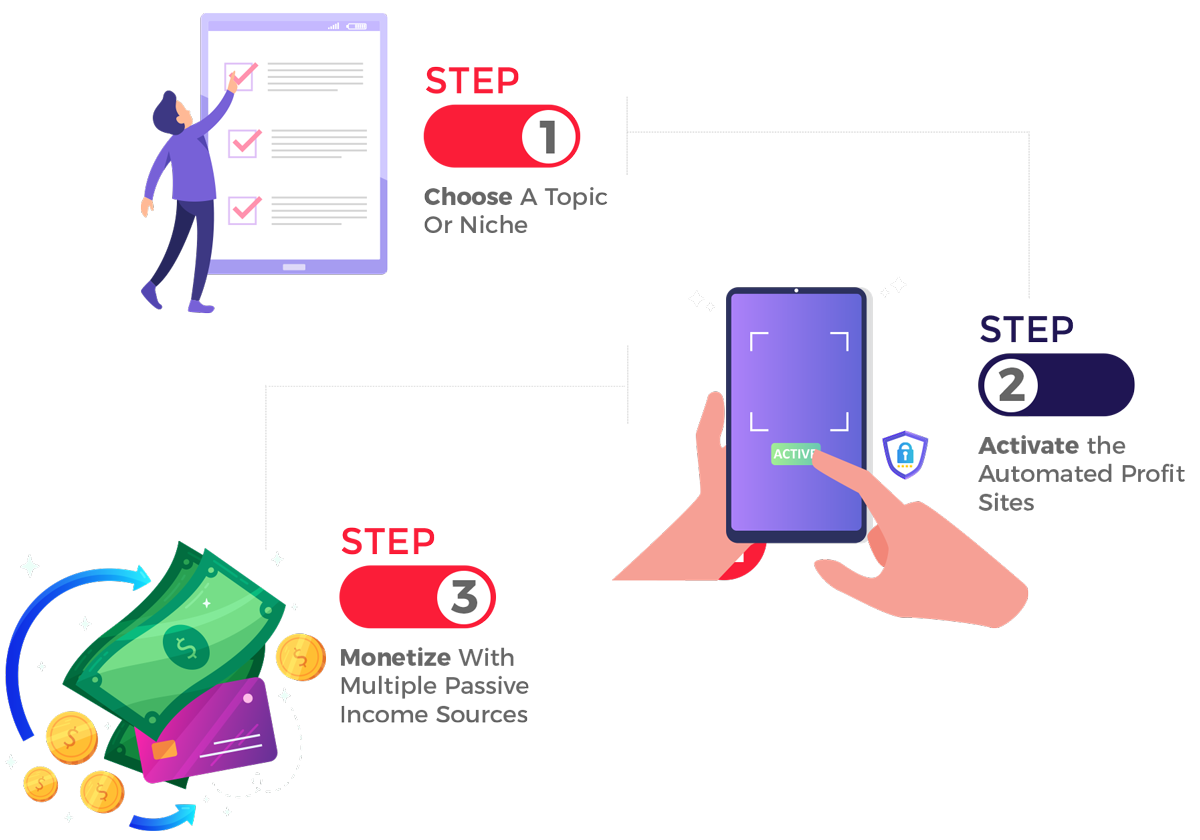



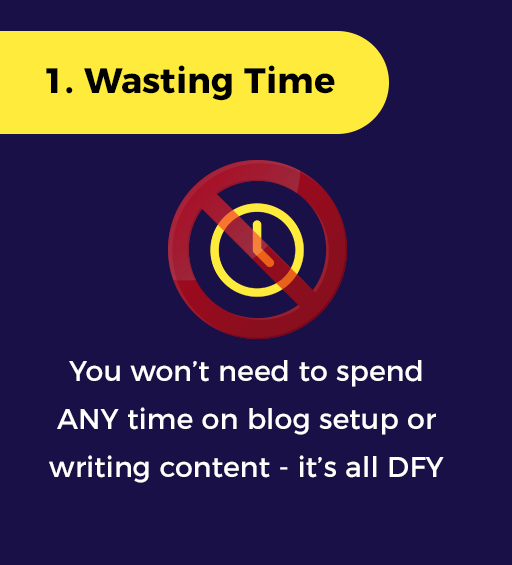


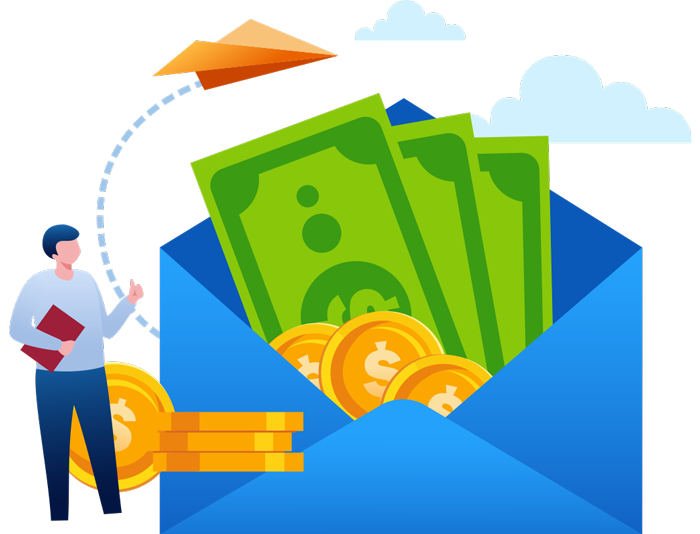
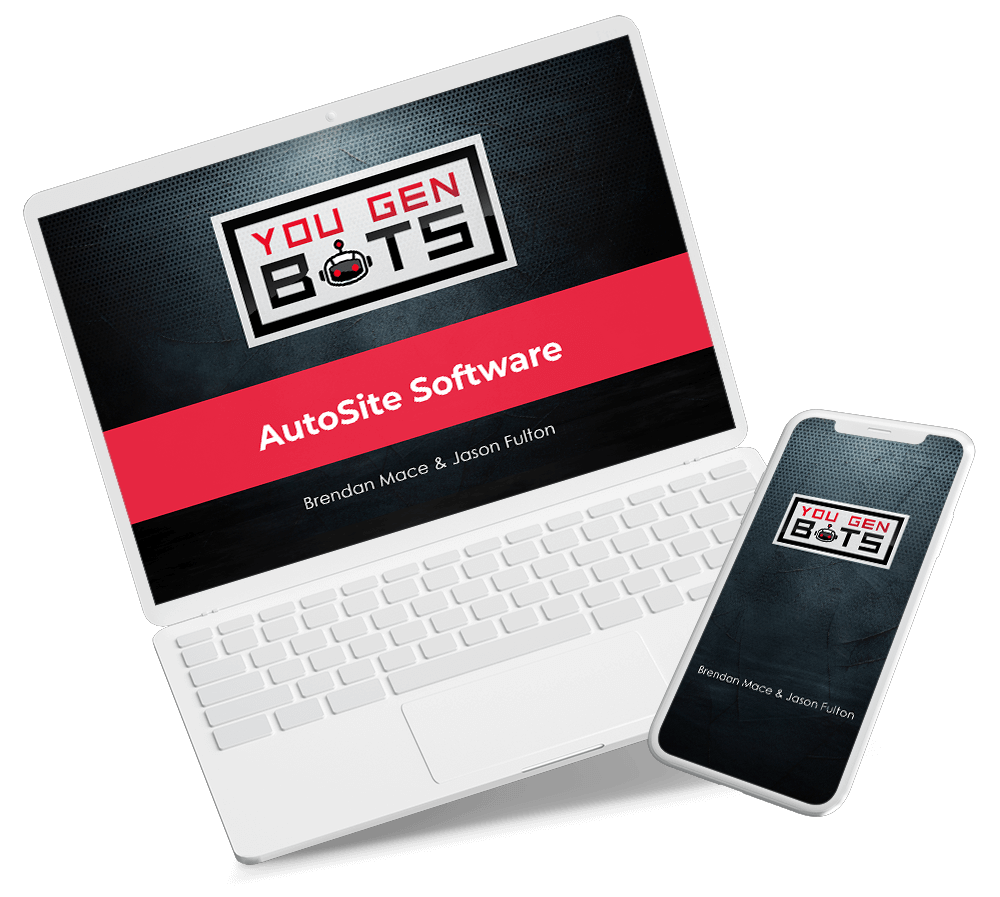
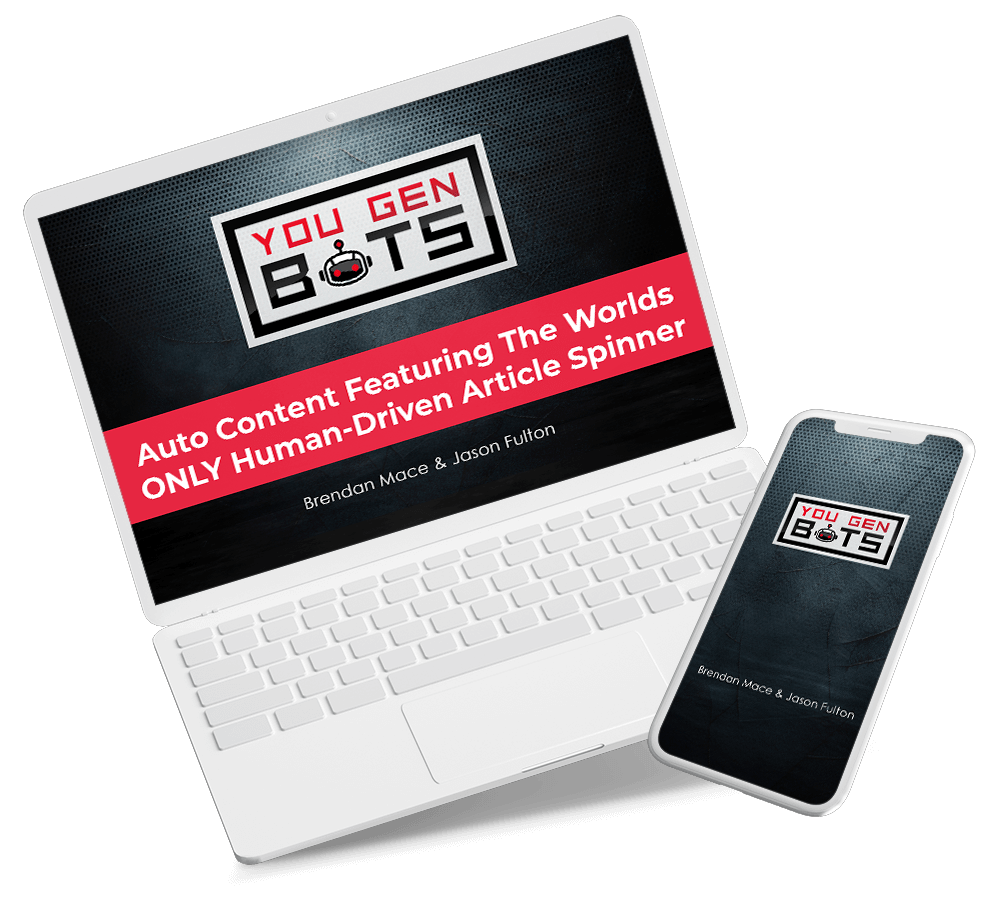

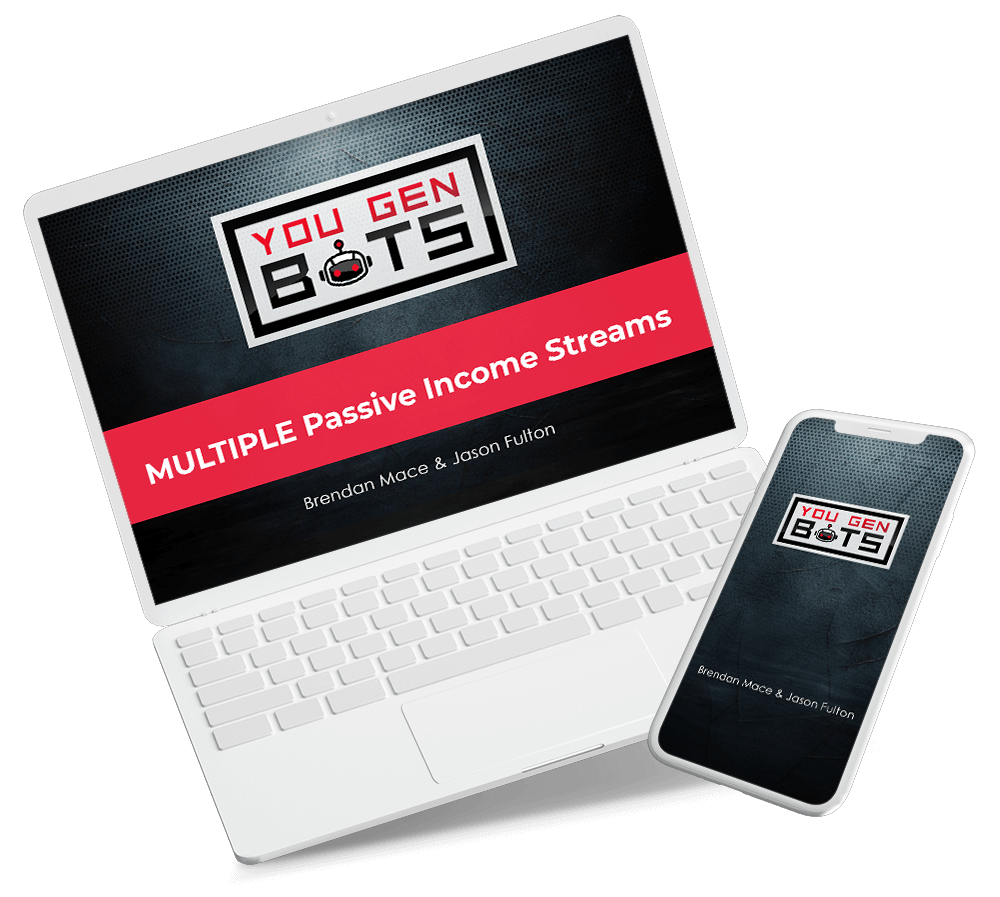
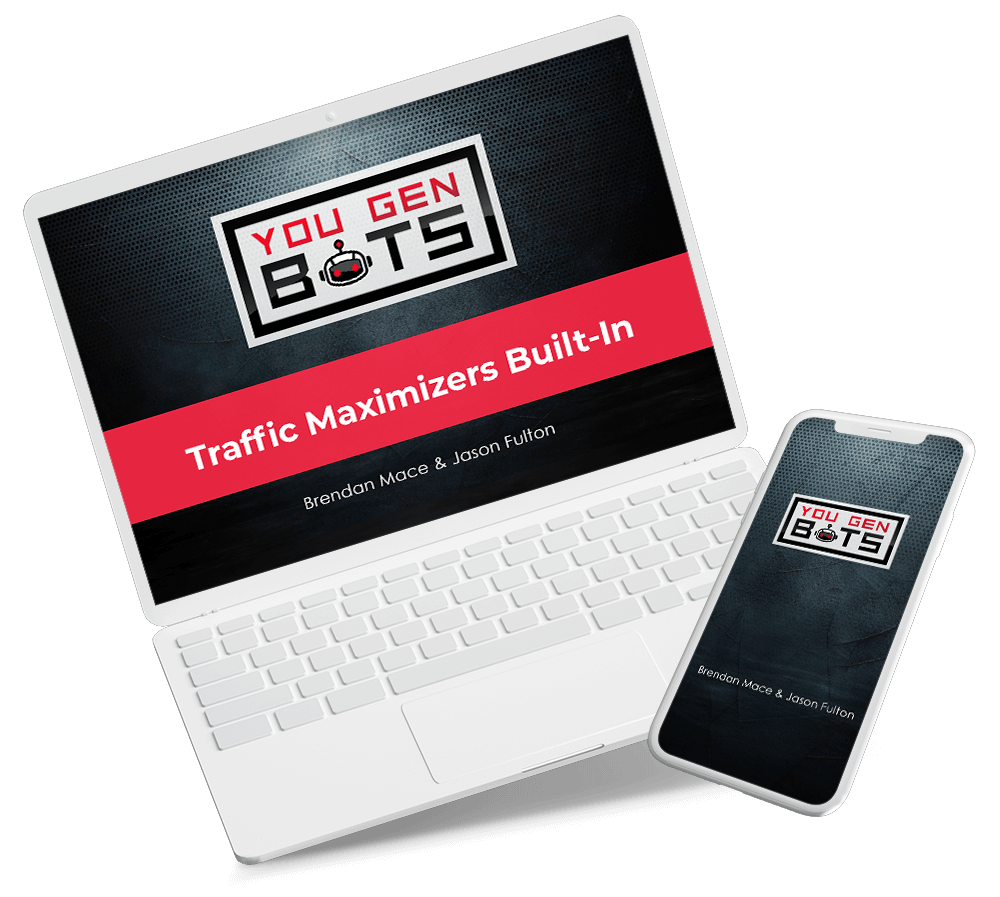



 HOW TO REDUCE STRESS AT WORK & AT HOME
HOW TO REDUCE STRESS AT WORK & AT HOME SECRETS TO LOOKING AND FEELING YOUNGER
SECRETS TO LOOKING AND FEELING YOUNGER YOUR GUIDE TO GOOD HEALTH INSURANCE
YOUR GUIDE TO GOOD HEALTH INSURANCE
 “SO UNFAIR, IT’S LIKE CHEATING!” New App Exploits An Untapped 1 BILLION User Traffic Source For FREE Traffic & Commissions In 60 Seconds Flat…The Hands Down Easiest Way To Get A Flood Of FREE Traffic! Click Play – See How It Works
“SO UNFAIR, IT’S LIKE CHEATING!” New App Exploits An Untapped 1 BILLION User Traffic Source For FREE Traffic & Commissions In 60 Seconds Flat…The Hands Down Easiest Way To Get A Flood Of FREE Traffic! Click Play – See How It Works




 Why Instagram?
Why Instagram?



 InstaBoss Is Saturation Proof That’s because InstaBoss taps into a 1 billion visitor traffic source
InstaBoss Is Saturation Proof That’s because InstaBoss taps into a 1 billion visitor traffic source Based On Results, Not Theory Most software is based on unproven theory, but not InstaBoss
Based On Results, Not Theory Most software is based on unproven theory, but not InstaBoss Tested By Newbies Unlike most software, InstaBoss was beta-tested by dozens of newbies
Tested By Newbies Unlike most software, InstaBoss was beta-tested by dozens of newbies Newbie Friendly
Newbie Friendly Saturation Proof
Saturation Proof
 InstaBoss Traffic App
InstaBoss Traffic App
 Case Studies
Case Studies

 No-Cost, Newbie Friendly, Easy Automated
No-Cost, Newbie Friendly, Easy Automated



 LOWERING YOUR CHOLESTROL
LOWERING YOUR CHOLESTROL